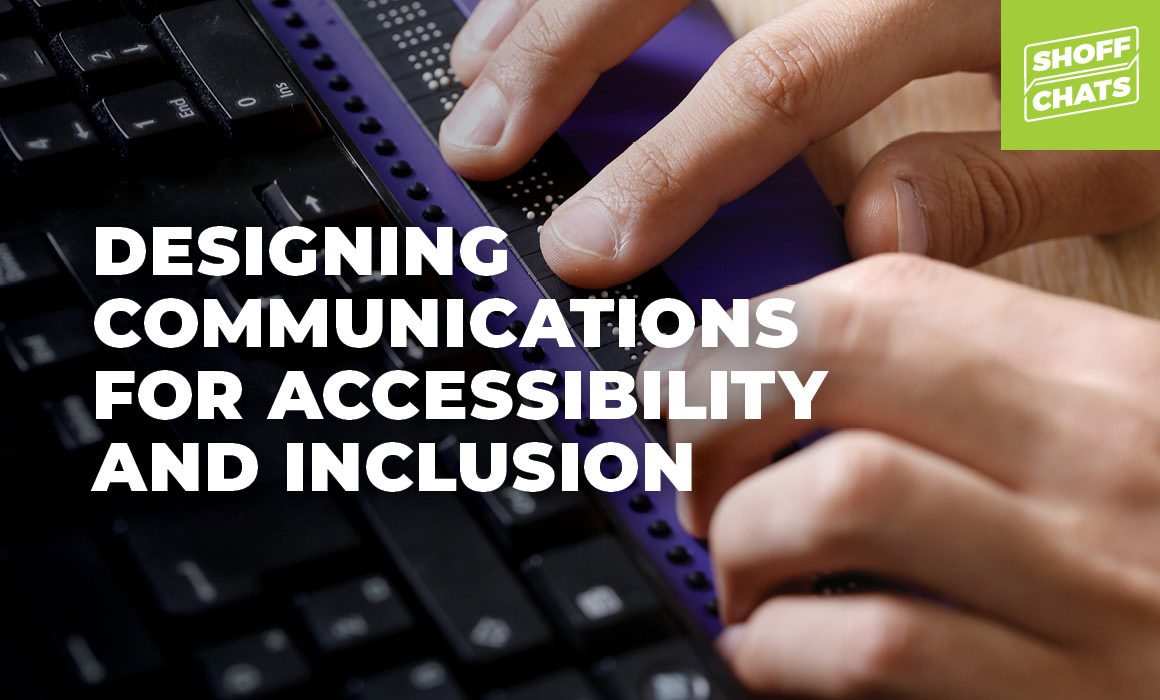Designing Communications for Accessibility and Inclusion
Ensuring your digital platforms are designed with accessibility and inclusion in mind will help your brand communicate more effectively with people – especially people with disabilities. At our most recent Shoff Chat, our guests provided insight into the importance of accessible and inclusive design as well as the barriers that can keep people from effectively interacting with a brand.
Our guests Darren Rowan, Program Manager with Eli Lilly and Company and Jacob Kluth, Experience Design Manager at Mars, Inc. have both led corporate teams through accessible and inclusive design practices and shared their experiences.
Here are some key takeaways:
- Accessible design is an outcome of an inclusive design process. This process welcomes people from all different backgrounds and abilities to participate throughout a project cycle – providing valuable insight and input during research and on the design and usability of a platform. Accessibility is one piece of inclusive design that focuses on specific accommodations for varying abilities and the elimination of barriers that might inhibit access to the platform.
- The key to ensuring accessible and inclusive design is to think about all of the lenses through which you should consider your design. Our guests recommended this article as a great starting point.
- As you begin to integrate accessible design into your communications, start with the tools that are already built into most applications, such as the Microsoft Office Suite. These features are a great way to start making emails, Word documents and PowerPoints more accessible.
- Many brands are making strides in accessibility for product designs and customer communications. Here are some of the best examples of brands who are making a difference.
- Designing inclusively from the start is the ideal, but when you have an existing digital platform that needs to be adjusted for accessibility, you may face a new set of challenges. Our attendees shared specifics on how they are integrating accessibility into an existing website and the lessons they’ve learned for evolving the platform in the future. Here’s a great resource they recommended.
Designing your marketing and communication materials in a way that is accessible to everyone can be a big undertaking, but our Shoff Chat guests all agreed that drawing others into the process and focusing on consistency over time are the best ways to make progress.
If you’d like to talk about how you can design your communications to be more inclusive and accessible, contact Katherine Coble.
Listen to this episode or past Shoff Chats episodes here.


